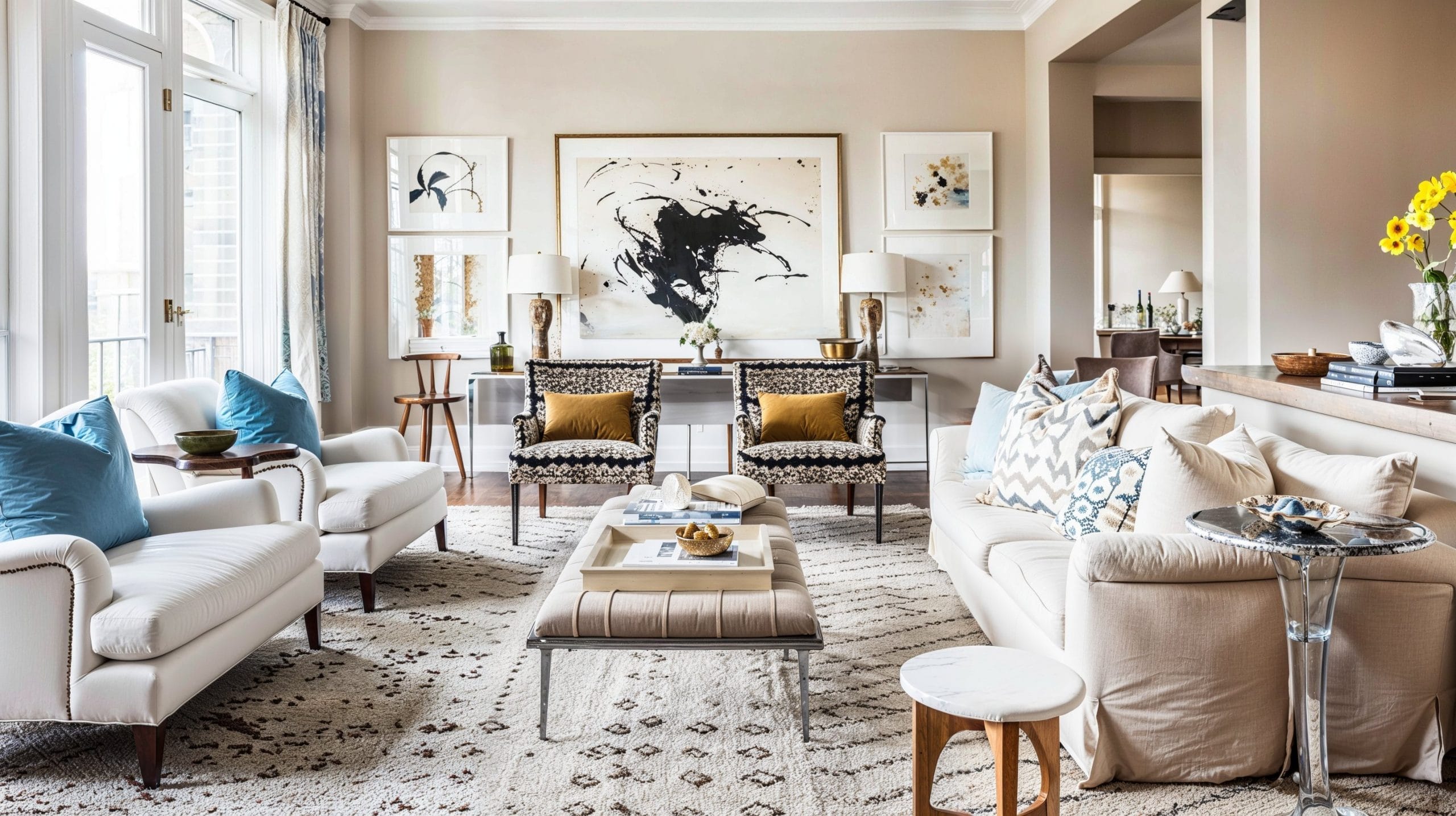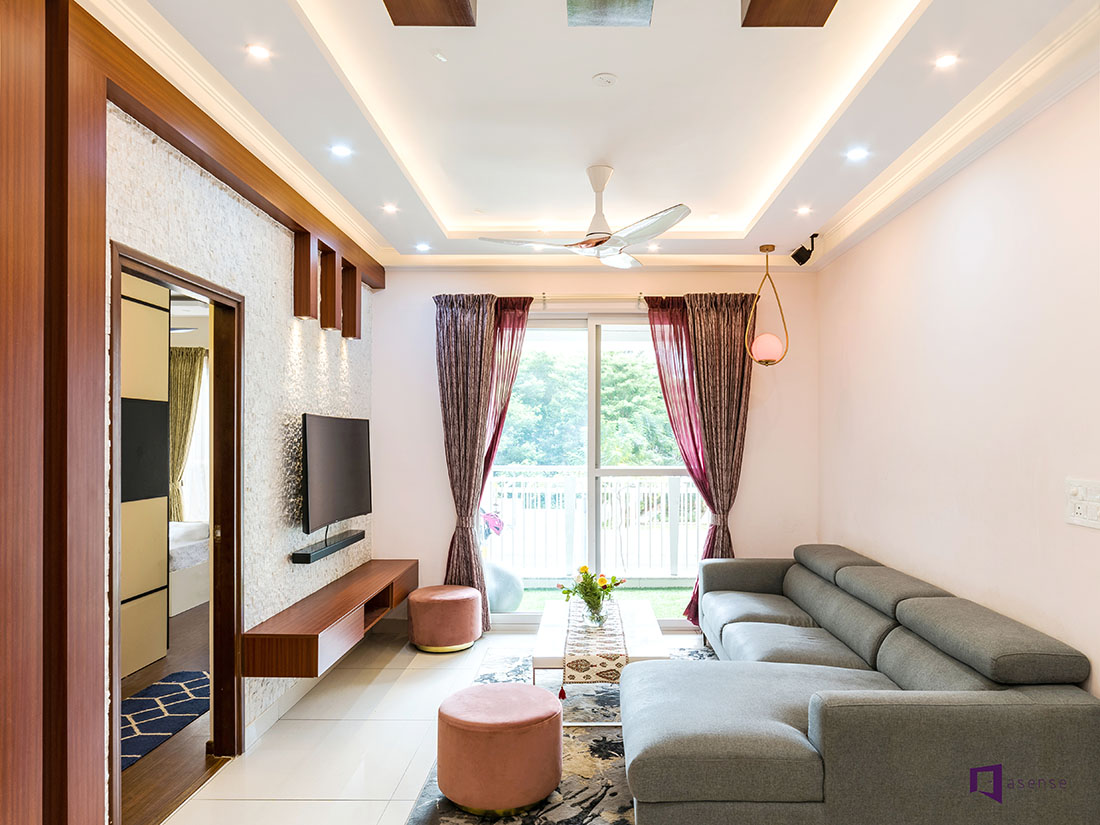Trust professionals in luxury interior design for a stylish home.
Trust professionals in luxury interior design for a stylish home.
Blog Article
Transform Your Home With Necessary Concepts of Inside Layout and Aesthetics
The art of transforming your home through the vital principles of indoor design and looks needs a thoughtful strategy that harmonizes shade, balance, and spatial recognition. By understanding the impact of color theory and the value of texture and patterns, one can create rooms that are not only aesthetically attractive but additionally deeply personal. Accomplishing this balance includes greater than mere decor; it includes a strategic arrangement and a keen understanding of exactly how each aspect communicates within a space. As we explore these fundamental ideas, think about how they might redefine your understanding of home and individual expression.
Comprehending Color Theory
Shade concept is a fundamental facet of interior decoration that substantially influences mood, perception, and general aesthetic. Comprehending the principles of color concept enables developers to create areas that resonate mentally with occupants while satisfying useful demands (Architecture Firm). Colors can be categorized right into three main kinds: primary, additional, and tertiary. Each group plays a vital duty in establishing consistency within a room.
The emotional impact of colors is profound; warm tones such as reds and oranges evoke energy and warmth, while great tones like blues and environment-friendlies promote calmness and serenity. Additionally, making use of corresponding colors enhances visual interest, producing striking contrasts that can raise a space's charm.
Neutral shades, on the other hand, serve as a versatile backdrop, allowing other design aspects to shine. It is important to consider variables such as lights and the room's objective when picking a color scheme, as these can modify the assumption of shades throughout the day.
Inevitably, a well-considered color pattern can change an area, promoting a sense of comfort and design that straightens with the occupants' choices. Mastery of color concept is, consequently, a vital skill for any kind of indoor designer aiming to develop unified and inviting environments.
Attaining Equilibrium in Design
How can developers accomplish a sense of equilibrium in their rooms? Accomplishing balance in layout is essential to creating unified insides. Designers can make use of three primary kinds of balance: in proportion, asymmetrical, and radial. Balanced balance entails preparing aspects evenly around a main point, cultivating a sense of order and peace. This kind frequently includes pairs of furnishings or artwork, enhancing visual security.
Asymmetrical equilibrium, on the other hand, depends on differing aspects that still accomplish a cohesive appearance. This strategy enables for even more vibrant and informal arrangements, supplying interest while maintaining stability. By carefully choosing differing dimensions, shades, and textures, developers can create a visually compelling room that feels balanced yet energised.
Radial balance emphasizes a central prime focus with components emitting external. This style is generally seen in round designs, where furnishings and decoration develop a cohesive border that attracts the eye inward.
Inevitably, achieving balance needs thoughtful factor to consider of range, proportion, and the relationships between aspects. Architecture Firm. By masterfully using these equilibrium concepts, developers can change rooms right into environments that feel both aesthetically pleasing and functionally harmonious, enhancing the overall experience for residents
Significance of Spatial Understanding

A keen feeling of spatial understanding permits developers to recognize centerpieces within an area, guiding the viewer's attention to essential functions while preserving a general sense of unity. It likewise helps in the calculated placement of illumination, which can considerably affect the understanding of space and mood. Additionally, understanding spatial relationships enables the designer to satisfy the details demands of occupants, making advice sure that each location serves its intended objective without endangering aesthetics.
Inevitably, spatial recognition is essential for taking full advantage of the possibility of any kind of indoor room. By meticulously thinking about the interaction in recommended you read between dimensions, format, and feature, designers can create environments that not just fulfill functional needs however additionally stimulate a feeling of convenience and charm, improving the total living experience.
Including Texture and Patterns
Welcoming a diverse variety of appearances and patterns can dramatically improve the visual and tactile charm of an indoor area. The tactical use numerous products-- such as timber, metal, textile, and stone-- develops depth and rate of interest, making an area feel extra inviting and dynamic. Integrating smooth surface areas with rough structures can develop an equilibrium that draws the eye and involves the senses.
When including patterns, consider both scale and repeating. Huge patterns can function as centerpieces, while smaller, refined designs can match various other components without frustrating the space. Layering patterns, such as pairing floral pillows with candy striped tosses, includes complexity and a sense of harmony if carried out attentively.
It is also essential to maintain a cohesive shade scheme, making certain that appearances and patterns interact rather than compete for focus. By picking a couple of crucial structures and patterns, you can develop a combined aesthetic that reflects your individual style while boosting the general atmosphere of the space. Inevitably, the mindful consolidation of these components can change a mundane space right into an advanced environment check abundant with character and warmth.
Individualizing Your Area
Creating a room that mirrors your individuality is important to achieving an absolutely inviting environment. Customization in interior layout enables you to infuse your one-of-a-kind style and passions into your home, changing it from a simple shelter right into a sanctuary that talks to who you are. Begin by picking a color scheme that resonates with your feelings-- bold tones can energize, while soft tones supply serenity.
Include artwork and style that reflect your interests, whether it be travel, nature, or abstract ideas. Displaying individual collections, such as publications, photos, or keepsakes, can evoke treasured memories and develop centerpieces within an area. Additionally, think about tailoring functional items, like upholstered furnishings, to align with your visual preferences.

Verdict
To conclude, the improvement of a home via the vital concepts of interior design and appearance necessitates an extensive understanding of shade concept, equilibrium, spatial recognition, texture, and personalization. Each aspect adds dramatically to developing a harmonious and functional living environment - miami interior design. By attentively integrating these principles, individuals can enhance the visual appeal and emotional vibration of their spaces, ultimately fostering a home that reflects unique identities while providing comfort and functionality
Report this page